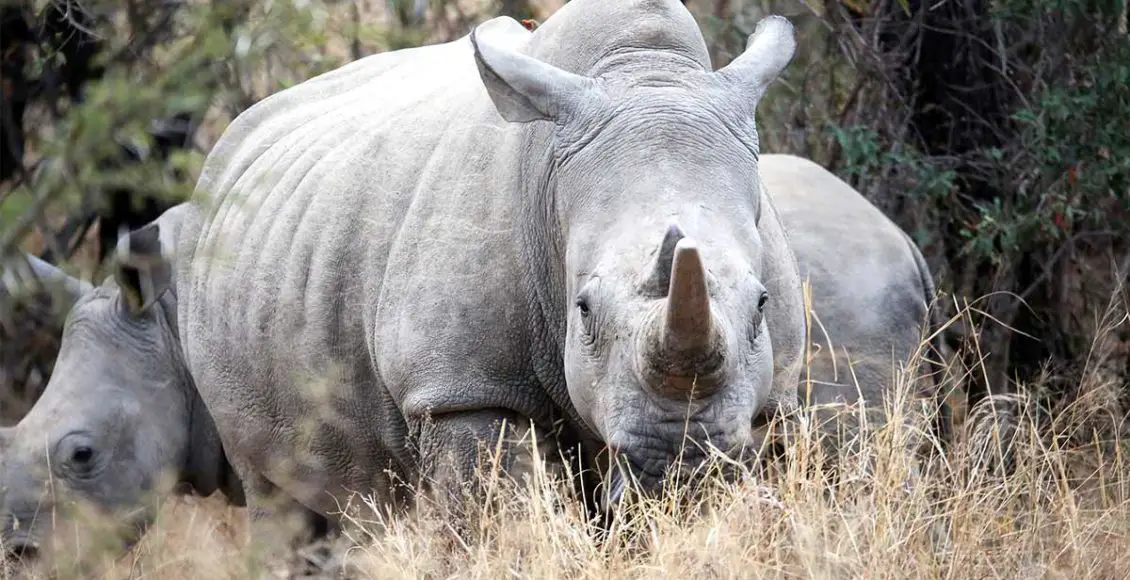There are only two northern white rhinos left in the world, a mother and a daughter.
Their eggs were fertilized artificially with material from males who have died.
An international team of scientists is trying to go against the course of nature. With the combination of oocytes and frozen rhino sperm, they are trying to make sure that the only two northern white rhinoceroses left in the world won’t be the last of their kind.
In August, Italian scientists were able to fertilize seven of the ten eggs they extracted from the two female rhinos.
They used sperm from male rhinos, which was frozen before they died.
According to Cesare Galli, the managing director of Avantea, the laboratory in Italy, the results were promising. However, this is only one step of the way to conservating the endangered species.
The team of Dr. Galli included scientists, veterinarians, and conservationists from the Leibniz Institute for Zoo and Wildlife Research in Germany, the Dvur Kralove Zoo in the Czech Republic, and the Ol Pejeta Conservancy in Kenya.
Jan Stejskal, the director of international projects at the Dvur Kralove Zoo told The Ney York Times:
“We were really able to do something no one before has been able to do. We still don’t know whether we’ll have embryos, but it was successful anyway… There is a real chance for them to have offspring.”
The northern white rhinos are a subspecies of the more populous southern white rhinos.
They used to run wild in the grasslands of Africa. Due to their hairier ears and smaller bodies, some believe that they should be considered as a separate species.
A race against time. That’s what human efforts to save the endangered species look like. In this case, the race is crucial. Critically endangered animals are the ones who have dozens or hundreds of them left. Northern white rhinos have only two survivors. The mother and her daughter, Najin and Fatu.
In 2014, scientists discovered that even artificial insemination using frozen sperm was unlikely to succeed for them since neither seemed physically capable of carrying an embryo to term.
The hope of natural mating died with the last male of their kind last year. His name was Sudan and he had spent the majority of his life in the Dvur Kralove Zoo in the Czech Republic. They captured him from his natural habitat in 1975, which is probably the reason he lived a long life.
In fact, in 1960 there were about 2,000 northern white rhinos in Africa.
Unfortunately, their population has been decimated, mostly because of habitat loss and poaching.
During his last years, Sudan was living in the conservatory in Kenya. In March 2018, he died at the old age of 45. He left his daughter, Najin, and his granddaughter, Fatu, to be the last two rhinos of their species.
Stephen Ngulu, the veterinarian in charge at the Ol Pejeta Conservancy in Kenya’s Laikipia County shared:
“When he died, it was a sad moment for all of us. We knew that we had some sperm that had been collected from him and several other males. So we knew that the only hope for the species was to get the eggs from the female.”
To complete the procedure of extracting the eggs from the two female rhinos, the doctors had to put them under general anesthesia. However, they knew it has its risks, so they had to be extremely careful. The head veterinarian at the Leibniz Institute in Germany, Dr. Frank Göritz, was in charge of administering the anesthesia. The operation was also overseen by David Ndeereh of the Kenya Wildlife Service and Thomas Hildebrandt of the Leibniz Institute.
According to Göritz and Ngulu, the rhinos recovered fine from the anesthesia.
“It was a big day for us. It was quite successful.”
After this procedure, the eggs were sent to Italy to be fertilized by sperm that had been collected years earlier from two males named Suni and Saút.
The ideal case the scientists are expecting is to see a northern white rhino born within a few years so that it could coexist with the two females and learn their behavior. To achieve that, they would need to do it as a surrogate pregnancy. A suitable candidate would be the southern white rhino. In fact, in July a southern white rhino calf was born at the San Diego Zoo Safari Park. They used hormone-induced ovulation and artificial insemination with frozen semen, according to San Diego Zoo Global.
There are still many steps ahead for one of these rhinoceroses to eventually carry a northern white rhino baby. Perfecting a technique for transplanting an embryo into a surrogate could take years, and gestation can last for 16 months or more.
Dr. Galli of Avantea said that even if every egg fails, there will most likely be opportunities to extract more. Egg fertilization alone was a big step forward, in terms of scientific achievement. Dr. Göritz agreed.
“It’s not only about saving the northern white rhino. We gained so much knowledge, and we used technology that we can now apply way earlier for other endangered species before they reach this situation.”



